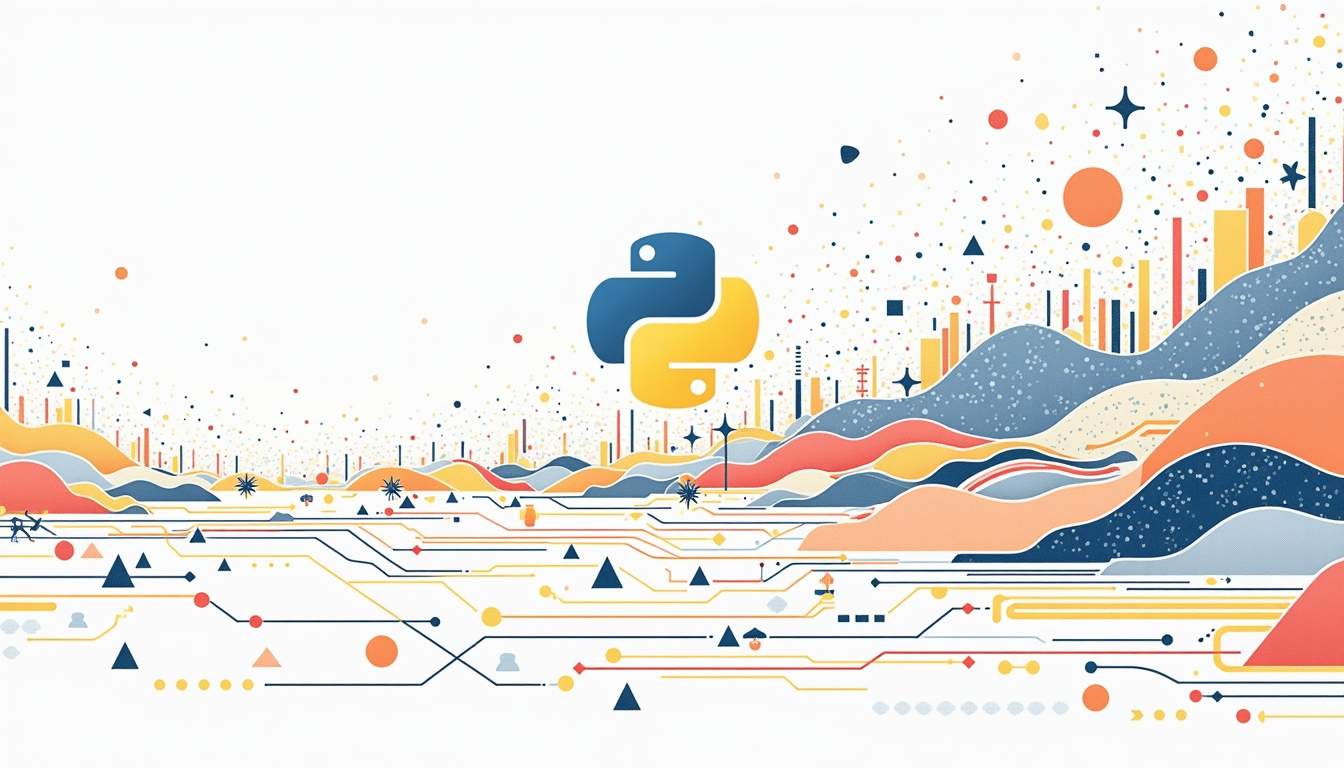The field of artificial intelligence is evolving at breakneck speed, shaping industries from healthcare and finance to logistics and entertainment. With AI-driven products becoming mainstream, choosing the right programming language is crucial for developers, startups, and enterprises looking to deliver scalable, efficient, and innovative solutions.
In this article, we explore the top 10 AI programming languages for 2026, detailing their strengths, typical use cases, pros and cons, and trends influencing modern AI development. We also look at how startups can leverage AI-driven product engineering sprints to accelerate MVP creation, optimize performance, and move toward product-market fit (PMF) faster.
Why the Choice of Programming Language Matters in AI
Selecting a programming language impacts:
- Development speed and prototyping – languages with concise syntax and rich libraries, like Python or Julia, allow faster iteration.
- Performance and scalability – languages like C++ and Rust excel in high-performance AI workloads.
- Ecosystem and support – large ecosystems ensure access to libraries, frameworks, and community support.
- Deployment and integration – some languages are better suited for web integration, cloud services, or embedded AI devices.
Understanding these factors helps startups and enterprises reduce development time, minimize costs, and deliver reliable AI-powered solutions.
1. Python
Python remains the dominant language for AI development in 2026, favored for its simplicity, readability, and robust ecosystem. Its libraries, including TensorFlow, PyTorch, and scikit-learn, cover machine learning, deep learning, and neural networks. Python’s support for data visualization through Matplotlib and Seaborn also makes it ideal for analyzing datasets and prototyping models quickly.
Use cases: Natural language processing (NLP), computer vision, predictive analytics, chatbots, reinforcement learning.
Pros: Rapid prototyping, large community, vast library ecosystem.
Cons: Slower execution speed, high memory consumption compared to compiled languages.
Python is especially suitable for startups running AI-driven product engineering sprints, where rapid prototyping is essential to validate MVP ideas before scaling.
2. R
R is a specialist language for statistical computing and data analysis. Its packages like caret, randomForest, and forecast allow developers to perform advanced analytics, simulations, and predictive modeling.
Use cases: Risk modeling, time-series forecasting, bioinformatics, statistical machine learning.
Pros: Exceptional statistical support, advanced visualization capabilities, great for research.
Cons: Not ideal for production-grade deployment, slower than compiled languages.
R continues to be a go-to for research-heavy AI projects and exploratory data analysis.
3. Java
Java’s cross-platform capabilities and mature ecosystem make it a strong choice for enterprise AI applications. Libraries like DeepLearning4J and Mallet support neural networks and NLP.
Use cases: Enterprise AI systems, recommendation engines, conversational interfaces, real-time analytics.
Pros: Reliable, scalable, cross-platform, strong community support.
Cons: Verbose syntax, slower innovation compared to newer AI-focused languages.
Java remains relevant for businesses needing AI integrated into large, stable software environments.

4. Julia
Julia offers high-performance numerical computing and is increasingly popular for scientific AI and data-intensive tasks. Its libraries—Flux.jl, DataFrames.jl, and JuMP.jl—support machine learning, optimization, and data analysis. Julia interoperates well with Python and R, allowing developers to reuse existing codebases.
Use cases: Data science, computational biology, large-scale simulations, numerical modeling.
Pros: Fast execution, easy integration with other languages, designed for parallel computation.
Cons: Smaller ecosystem, fewer resources than Python or Java.
Julia is particularly valuable for startups and researchers building computationally intensive AI models.
5. JavaScript
JavaScript, alongside Node.js, enables AI applications directly on web platforms. Libraries like TensorFlow.js allow running ML models in browsers or on servers, making AI accessible for web and full-stack development.
Use cases: Browser-based ML, real-time analytics, AI-driven web apps.
Pros: Seamless web integration, large developer community, cross-platform capabilities.
Cons: Less optimized for heavy numerical computing, limited AI-specific libraries.
JavaScript’s versatility helps startups quickly embed AI features into user-facing applications without extensive backend infrastructure.
6. C++
C++ provides performance-critical AI deployment, ideal for low-latency environments. Its libraries—TensorFlow C++ API, Caffe2, and OpenCV—support deep learning, computer vision, and robotics.
Use cases: Autonomous vehicles, robotics, high-frequency trading, embedded AI systems.
Pros: High performance, memory-efficient, direct hardware control.
Cons: Steeper learning curve, longer development time.
C++ is often used alongside Python in hybrid AI development, where prototypes are quickly built in Python and optimized in C++ for production.
7. Lisp
Lisp excels in symbolic reasoning and AI systems requiring logical decision-making. Dialects like Clojure and CLIPS allow AI applications with dynamic knowledge representation and expert systems.
Use cases: Symbolic AI, rule-based systems, automated reasoning.
Pros: Excellent for logical AI, flexible code manipulation.
Cons: Limited modern adoption, smaller library support.
Although niche, Lisp remains relevant in specialized AI domains.

8. Haskell
Haskell’s purely functional programming model supports mathematically rigorous AI, reducing side effects and bugs. Libraries like HLearn and LambdaNet enable machine learning while ensuring code correctness.
Use cases: Probabilistic modeling, theorem proving, constraint programming.
Pros: Type safety, functional purity, strong abstraction capabilities.
Cons: Smaller community, steeper learning curve.
Haskell is often used for AI projects where reliability and verifiable logic are paramount.
9. Prolog
Prolog is a declarative language perfect for knowledge representation and reasoning-based AI systems. SWI-Prolog and ProbLog help developers encode facts and rules efficiently.
Use cases: Expert systems, logic-based AI, formal verification.
Pros: Declarative logic, rule-based problem solving.
Cons: Limited adoption, not ideal for statistical ML.
Prolog remains the top choice for explainable AI and symbolic reasoning tasks.
10. Scala
Scala blends functional and object-oriented programming, ideal for big data and distributed AI workloads. Libraries like ScalNet and integration with Apache Spark enable scalable ML pipelines.
Use cases: Real-time analytics, distributed AI, streaming data ML.
Pros: Strong typing, scalable, compatible with Java ecosystem.
Cons: Steep learning curve, less beginner-friendly.
Scala is increasingly adopted in enterprise AI for scalable pipelines and production-grade ML.
Trends in AI Development for Startups
One of the most impactful trends in 2026 is AI-driven product engineering sprints. Startups leverage these sprints to rapidly prototype AI solutions, validate MVPs, and iterate toward product-market fit (PMF).
Teams often combine Python or TypeScript for rapid prototyping with Rust or C++ for core performance optimization, allowing a hybrid workflow that balances speed and scalability. Startups, particularly seed-stage, use this model to:
- Reduce time-to-market by compressing traditional development cycles.
- Minimize wasted effort with faster user validation loops.
- Build scalable, production-ready AI systems incrementally.
Firms like Wednesday Solutions have popularized this approach, helping early-stage companies achieve faster insights while optimizing engineering resources.
Comparative Overview of AI Languages
FAQ
Q: Which language is best for AI beginners in 2026?
A: Python is recommended for beginners due to its simplicity, wide adoption, and extensive library support.
Q: What is the best language for high-performance AI?
A: C++ and Rust offer high performance and low-latency execution, ideal for robotics and embedded systems.
Q: Can startups combine languages in AI development?
A: Yes, hybrid stacks are common. Python is often used for prototyping, while C++/Rust optimize core performance.
Q: How do AI-driven product engineering sprints help startups?
A: They allow rapid prototyping, fast iteration, and early PMF validation, reducing time-to-market and wasted effort.
Q: Are functional languages like Haskell or Scala relevant for AI?
A: Yes, they are valuable for scalable, mathematically rigorous, or distributed AI applications.






